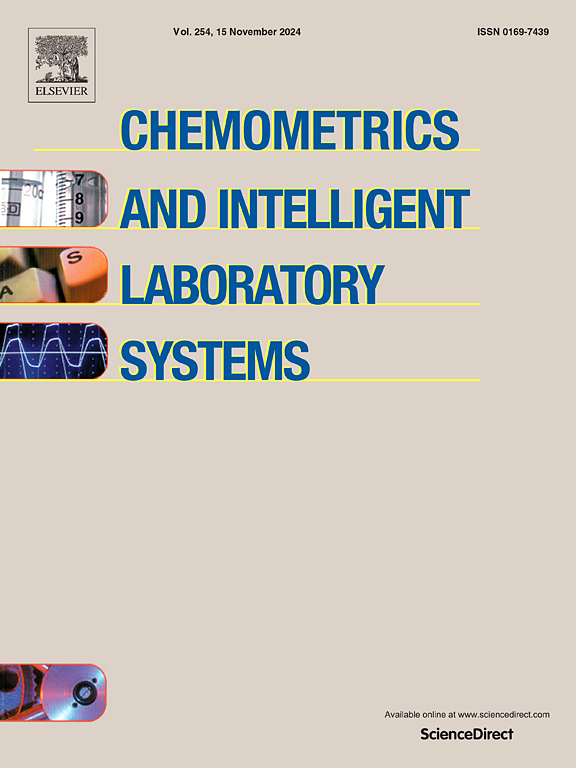基于监督式机器学习的碳酸注水采收率评估及其不确定性分析
IF 3.7
2区 化学
Q2 AUTOMATION & CONTROL SYSTEMS
Chemometrics and Intelligent Laboratory Systems
Pub Date : 2024-12-08
DOI:10.1016/j.chemolab.2024.105303
引用次数: 0
摘要
在开发一种具有时间效率和成本效益的预测模型方面,人们所做的努力有限,该模型能够估计碳酸注水(CWI)的采收率。因此,在本研究中,我们利用监督机器学习(ML)技术:决策树、支持向量回归和随机森林(RF)来预测CWI的采收率,并将实验条件、岩石性质和流体性质作为预测指标。利用相关技术、排列重要性和Shapley加性解释(SHAP)来评估各种参数对采收率的影响,这使我们的研究与现有的研究不同。总体而言,ML模型的回收率预测效果显著,决定系数、平均绝对误差和均方根误差分别为0.81 ~ 0.87、4.30 ~ 4.96%和4.82 ~ 5.89%。RF模型的表现优于同类模型。最重要的是,RF模型成功预测了全新数据的采收率,其误差和绝对相对误差分别小于15%和19%。根据SHAP分析,高注入速度、孔隙度、渗透率和压力可以提高采收率,反之亦然。同样,低温、油的密度和粘度、矿化度对采收率也有促进作用,而注入速度和温度对采收率的影响最大,对采收率的影响最小。结合蒙特卡罗模拟,成功应用RF模型预测了1000组随机生成的自变量集的采收率,证明了该模型在不确定性分析中的适用性。目前的建模研究不仅弥补了CWI采收率预测建模的知识空白,而且对快速估计和优化采收率具有重要意义。本文章由计算机程序翻译,如有差异,请以英文原文为准。

Estimating oil recovery efficiency of carbonated water injection with supervised machine learning paradigms and implications for uncertainty analysis
Limited efforts have been made to develop a time-efficient and cost-effective predictive model capable of estimating the oil recovery efficiency of carbonated water injection (CWI). Therefore, in this study, we utilized supervised machine learning (ML) techniques: decision tree, support vector regression, and random forest (RF) to predict the recovery efficiency of CWI, with experimental conditions, rock properties, and fluid properties as predictors. The influence of various parameters on oil recovery efficiency was assessed using correlation technique, permutation importance, and Shapley Additive Explanations (SHAP), which sets our study apart from existing studies. Generally, the ML models yielded remarkable recovery efficiency prediction results, achieving coefficients of determination, mean absolute errors, and root mean square errors of 0.81–0.87, 4.30–4.96 %, and 4.82–5.89 %, respectively. The RF model outperformed its counterparts. Most importantly, the RF model successfully predicted the recovery efficiency on entirely new data with an error and absolute relative error of less than 15 % and 19 % respectively According to the SHAP analysis, high injection rate, porosity, permeability, and pressure improve oil recovery, and vice versa. Similarly, low temperature, oil density and viscosity, and salinity enhance oil recovery while injection rate and temperature were the most and least influential parameters, respectively. The RF model was successfully deployed to predict the oil recovery efficiency for 1000 randomly generated sets of independent variables in conjunction with Monte Carlo simulation, demonstrating the applicability of the model in uncertainty analysis. The current modeling study not only bridges the knowledge gaps in predictive modeling of the oil recovery efficiency of CWI but also holds significant promise for rapid estimation and optimization of oil recovery efficiency.
求助全文
通过发布文献求助,成功后即可免费获取论文全文。
去求助
来源期刊
CiteScore
7.50
自引率
7.70%
发文量
169
审稿时长
3.4 months
期刊介绍:
Chemometrics and Intelligent Laboratory Systems publishes original research papers, short communications, reviews, tutorials and Original Software Publications reporting on development of novel statistical, mathematical, or computer techniques in Chemistry and related disciplines.
Chemometrics is the chemical discipline that uses mathematical and statistical methods to design or select optimal procedures and experiments, and to provide maximum chemical information by analysing chemical data.
The journal deals with the following topics:
1) Development of new statistical, mathematical and chemometrical methods for Chemistry and related fields (Environmental Chemistry, Biochemistry, Toxicology, System Biology, -Omics, etc.)
2) Novel applications of chemometrics to all branches of Chemistry and related fields (typical domains of interest are: process data analysis, experimental design, data mining, signal processing, supervised modelling, decision making, robust statistics, mixture analysis, multivariate calibration etc.) Routine applications of established chemometrical techniques will not be considered.
3) Development of new software that provides novel tools or truly advances the use of chemometrical methods.
4) Well characterized data sets to test performance for the new methods and software.
The journal complies with International Committee of Medical Journal Editors'' Uniform requirements for manuscripts.

 求助内容:
求助内容: 应助结果提醒方式:
应助结果提醒方式:


